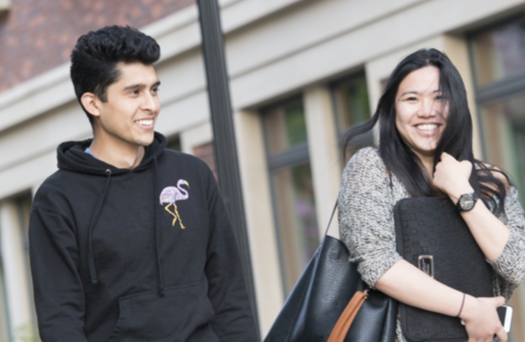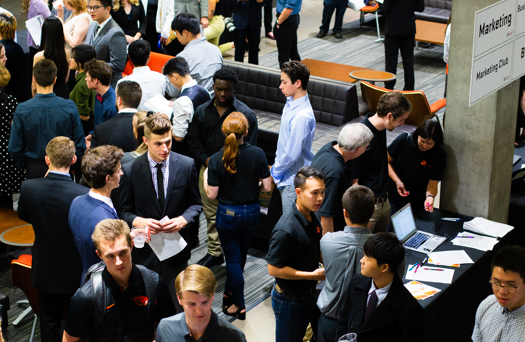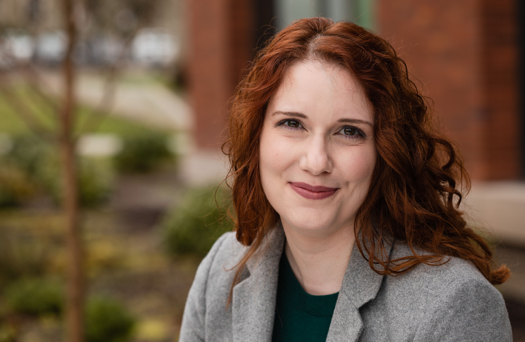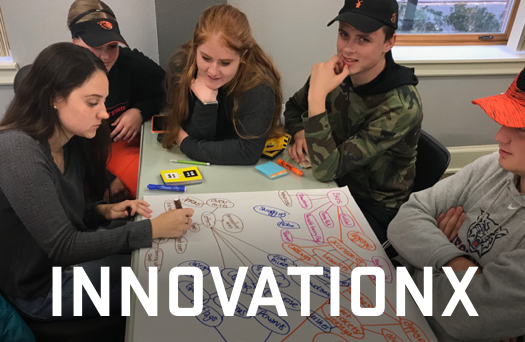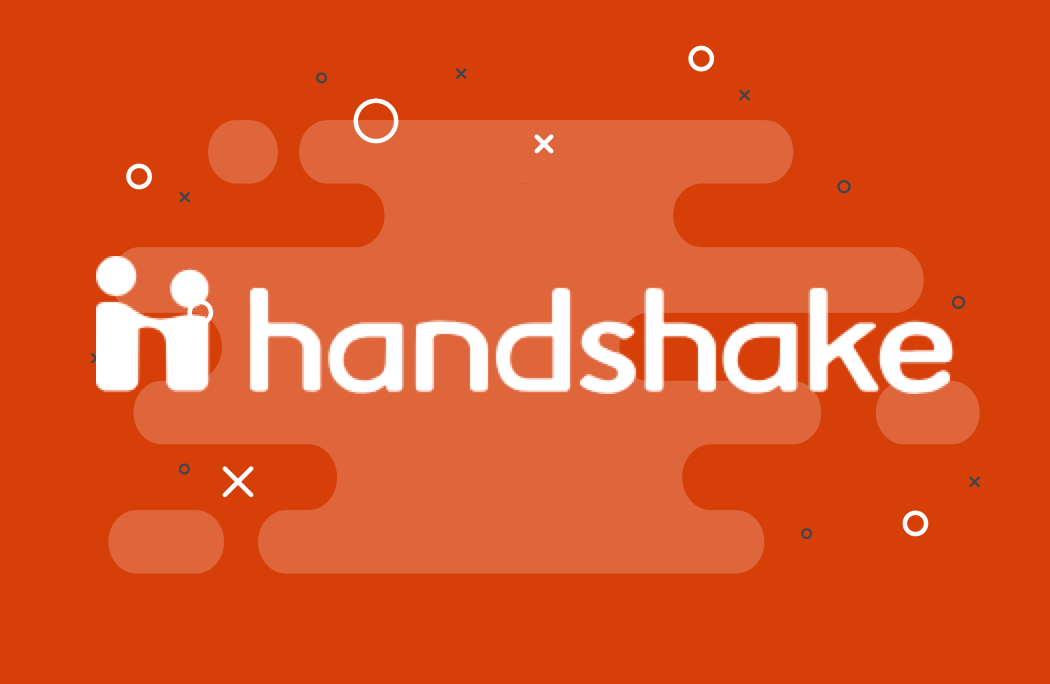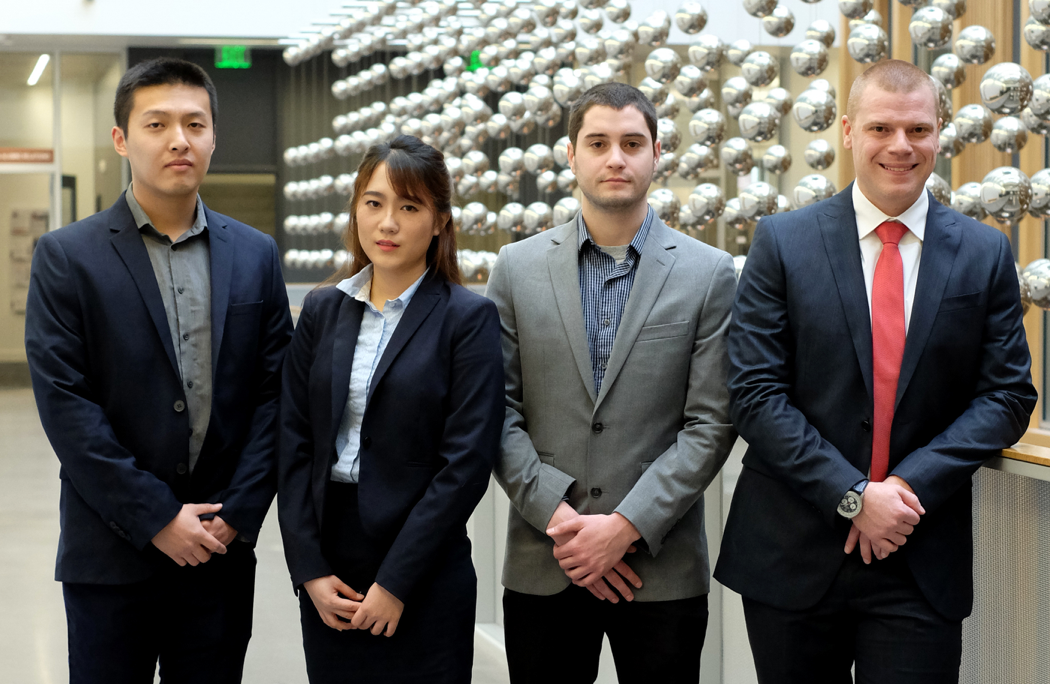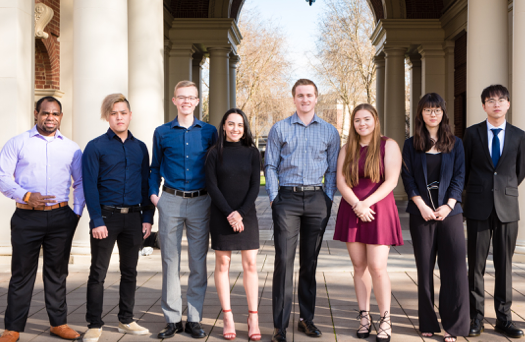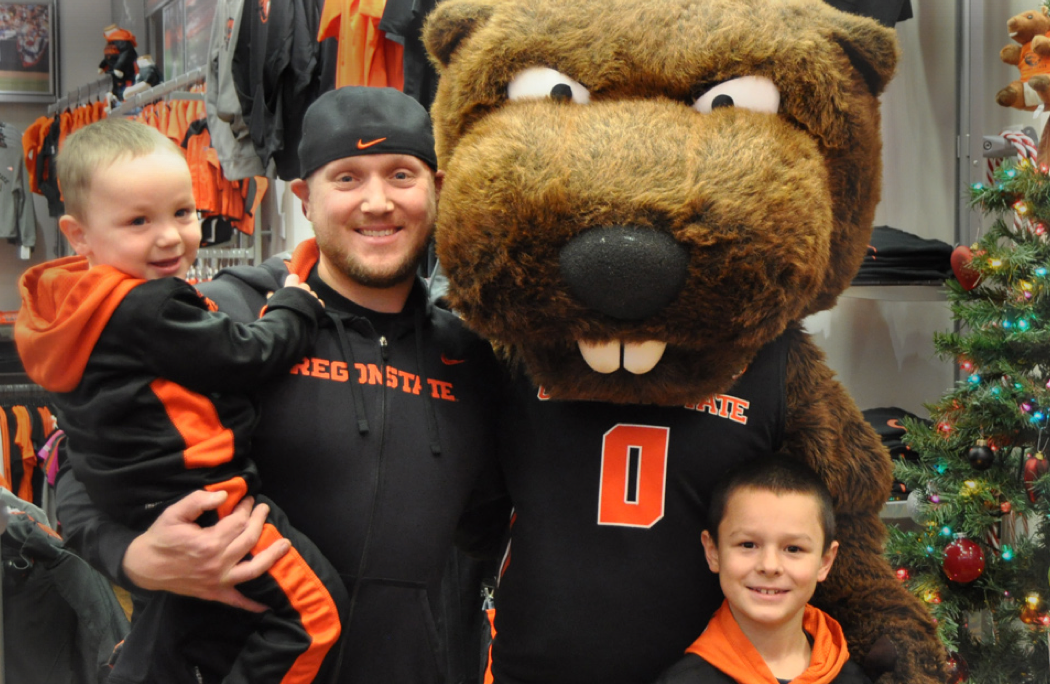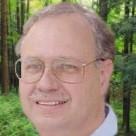Employment:
Oregon State University, Corvallis, Oregon
Emeritus Professor, October 2005-present.
BIT Extension Initiative Leader, January 2002-September 2005.
Develops appropriate funding, faculty and educational resources for a statewide BIT (business and information technology) Extension initiative. Ensures that BIT Extension delivers useful outreach education on contemporary business practices and the use of information technology to diverse individuals, private enterprises, public organizations and governmental units.
Extension Sea Grant Specialist and Professor of Managment, July 1996-September 2005.
Develops, conducts and evaluates university outreach on managerial issues in coastal recreation and marine trades enterprises. Also conducts applied research and demonstration projects. As appropriate, presents graduate and undergraduate course work for OSU College of Business students. OSU Graduate Faculty appointment in the College of Business and graduate student advisor for Marine Resources Management Program.
Director of Business ONE, College of Business Distance Education, May 1997-May 1999.
Administrative leadershipprovided for the college's undergraduate degree program delivered at a distance, called Business ONE. Coordinate and integrate OSU undergraduate business faculty courses with pilot community colleges. Assist faculty in developing distance education strategies and courses. Foster supportive OSU systems to assist business distance education students with needs such as: admissions, registration, advising, library services, financial aid and career services.
Associate Director of Oregon Sea Grant College and Extension Sea Grant Program Leader, 1988-1995.
Provided administrative leadership for 21 Extension Sea Grant faculty; integrated outreach and research initiatives of the Oregon Sea Grant College; participated in the research program development process; and, served as a member of management team providing overall direction for the College.
Cornell University, Ithaca, New York
Senior Extension Associate (Cornell University Experiment Station, Riverhead, New York), 1981-1987.
District Program Coordinator for Sea Grant Extension in New York State (14 county responsibility). Administered seven Extension Sea Grant faculty and five support staff. As Senior Extension Specialist, conducted coastal recreation industry outreach and research in Long Island/New York City metropolitan region.
Acting Program Leader, 1984-1985.
Served as statewide administrative Program Leader for 18 faculty of Sea Grant Extension during incumbent's sabbatical.
Regional Extension Specialist (Chautauqua County Extension Office - Fredonia, N.Y.), 1976-1980.
Conducted outreach education and applied research focusing on coastal business issues within the Great Lakes region of New York State.
Service:
National
-
Co-editor and Founder, National Web Book of IT Innovations in Extension. 2001 to present.
-
National Leadership Team, Marina Net Development Project, National Sea Grant Program. 1995-2000.
-
National Chair, Assembly of Sea Grant Program Leaders. 1993-95.
-
National Chair, Awards and Recognition Commission, Epsilon Sigma Phi. 1990-92.
State and Regional
-
Co-Chair, Western Regional Taskforce on eCommerce Education, Western Regional Development Center . 2000 to present.
-
Chair and Facilitator, Governor’s Conference on Louisiana Tourism 2010. Baton Rouge , Louisiana . November 2001.
-
Co-chair, Training and Education Committee, Pacific Coast Congress (PCC) of Harbormasters and Port Managers. 1996-2000.
-
OSU Statewide Distance Education Council. 1998-2000.
-
Faculty Senator, OSU Faculty Senate. 1992-95.
- President, Epsilon Sigma Phi (Gamma Chapter OSU). 1988-90.
Publications:
Journal Articles and Abstracts
-
DeYoung, B., L. Wampler and J. Stiers. “Online Business Alliances: Net Gain @ Speed of Thought,” National Web Book of IT Innovations in Extension. Pennsylvania State University. February 2002.
-
DeYoung, B. and P. Kight. “Distance Education: University Outreach With Clientele Toward the 21st Century,” World Congress On Coastal and Marine Tourism. Honolulu , Hawaii . June 1998.
-
DeYoung, B. and P. Corcoran. “Those Ignoring The Rudder Shall Answer To The Rocks--Recreational Boating Industry Challenges Along The Columbia River ,” World Congress On Coastal and Marine Tourism. Honolulu , Hawaii . June 1998.
-
DeYoung, B. “Networked Computing - A New Collaborative Tool for Making Two Heads Better Than One!” Journal of Agricultural and Food Systems. Vol. 3, No. 1, Pp. 99-105. Summer 1996.
-
DeYoung, B., P. Harris, and L. Larsen. “Virtual Communities and University Outreach,” Journal of Extension. Vol. XXXIII, No. 1. February 1995.
-
DeYoung, B. “Delivering Marine Education Through A Virtual Coastal Community,” Abstracts, 6th. Pacific Congress on Marine Science and Technology. A. Bellwood, editor. P. 60. July 1994.
-
DeYoung, B. “Low Power Radio: A Promising Innovation for Ecotourism Communications,” Abstracts. 6th Pacific Congress on Marine Science and Technology, A. Bellwood, editor. P. 61. July 1994.
-
DeYoung, B. “The High Potential of Low Power Radio,” Journal of Extension, Vol. XXX, pp. 34-35. December 1992.
-
DeYoung, B. “Socioeconomic Trends Influencing Marina Marketing Toward The 21st Century,” International Marina Institute . Vol. I, pp. 11-15. October 1989.
-
DeYoung, B. “What's Relationship Marketing? The Importance of Communicating with Key Officials,” Journal of Extension. Vol. XXIV, pp. 24-25. Fall 1988.
-
DeYoung, B. “A Promising Material To Improve FAD Durability and Cost ,” Abstract in: Bulletin of Marine Science. 1985.
-
Wilkins, B. and B. DeYoung. “Negative Results - They May Not Be!” Journal of Extension. Vol. XXI, pp. 51-54. September-October, 1984.
Book Chapters
-
DeYoung, B. “Impact of Technology on Educational Programming,” Fundamentals of a Sea Grant Extension Program. Cornell University. Pp. 56-59. 2001.
-
DeYoung, B. “Marketing Coastal Recreation Enterprises Toward the 21st Century,” Ocean Agenda 21. Oregon Sea Grant College Program. Pp. 105-109. 1990.
-
DeYoung, B. and W. Boldt. “Putting Relationship Marketing To Work!” Creative Marketing. Cornell University . Pp. 58-80. 1998.
- DeYoung, B. and W. Boldt. “What’s Relationship Marketing?” in Marketing Cooperative Extension Creatively. Cornell University . Pp. 53-67. 1987.
Monographs and Articles
-
DeYoung, B. “Making Waves with Low Power AM Radio,” Oregon Sea Grant. 12 pp. June 2001.
-
DeYoung, B., M. Liffmann and T. Jones. “eMinds at Work: IT Use in Louisiana ’s Tourism Industry,” Louisiana and Oregon Sea Grant College Programs. 16 pp. April 2001.
-
Williams, E. and B. DeYoung. “LPR Resource Handbook for Oregon Coastal Park Managers,” Oregon Sea Grant. January 2000.
-
DeYoung, B. “Sea Grant Distance Education: The High Potential Of Low Power Radio!” The Communicator. March 1999.
-
DeYoung, B., Pat Corcoran and Rob Neely. “Surfing the Virtual Coast: Marine Trades Electronic Communications and Collaboration Towards the 21st Century,” National Marina Research Conference. International Marina Institute. Dallas , Texas . March 1997.
-
DeYoung, B. “Enhancing Public Recreational Boating Access in the Pacific Northwest,” Coastal Currents: Florida Coastal Management Program. P. 5. Fall 1996.
-
McArdle, D. and B. DeYoung. “Virtual Marine Communities on Internet Created by Oregon Sea Grant--A Possibility for California ?” California Sea Grant Newsletter. Pp. 2-3. April 1995.
-
DeYoung, B. “OPACnet: Developing A Virtual Marine Community,” The Communicator. Pp. 1-2. June 1994.
-
DeYoung, B. “A New Communication Method for Reaching Target Audiences--Low Power Radio,” OSU Extension Service Special Report. 8 pp. 1992.
-
Sulzmann, J. and B. DeYoung. “Low Power Radio's Potential.” Communicaids - OSU Agricultural Communications Newsletter. Number 130. Pp. 3-4. September/October 1992.
-
DeYoung, B. “National Survey of Professional Journal Needs of Sea Grant Staff,” Oregon Extension Sea Grant Program. 6 pp. 1991.
-
Smith, F., R. Anderson and B. DeYoung. “Comprehensive Management Study: Port of Cascade Locks, Oregon ,” Oregon State University Extension Sea Grant Program. 37 pp. 1989.
-
DeYoung, B. “Charterboat Marketing: Putting Relationships to Work,” Cornell University Information Bulletin #207. 23 pp. 1987.
-
DeYoung, B. “Managing To Catch People!” in Coastlines Magazine, New York Sea Grant Institute, Vol. 17, p. 1. Also published in: Makai, University of Hawaii , and Alaska Marine Resource Quarterly. 1987.
-
DeYoung, B. Managing To Catch People: An Educator's Guide for Charterboat Enterprise Marketing, New York Sea Grant Institute. 79 pp. 1986.
-
DeYoung, B. “An Innovative Material For Reducing Marina Mooring Costs,” Coastlines Magazine. New York Sea Grant Institute. Vol. 14, p. 5. 1984.
-
Bishop, C. and B. DeYoung, et al. “Guidelines for the Effective Use of Floating Tire Breakwaters,” Cornell University Information Bulletin #197. 23 p. 1983.
-
DeYoung, B. “FTB's Mean $$$ for Marine Business,” Coastlines Magazine. New York Sea Grant Institute. Vol. 12, p. 3. 1982.
-
DeYoung, B. and R. DeAngelis. “ Eastern Long Island 's Recreational Climate-Year 'Round!” U.S. Department of Commerce, National Oceanic and Atmospheric Administration (NOAA) pamphlet. 33 pp. 1982.
-
DeYoung, B. and K. DeYoung. “Casualty Loss Tax Information for Coastal Property Owners,” Cornell University . 4 p. 1980.
Professional Reports
-
DeYoung, B. “Business and Information Technology (BIT) Extension as Economic Catalyst for Rural Oregon .” Oregon State University and Oregon University System funding priority. November 2001.
-
Neely, R., R. Johnson and B. DeYoung. The Business of Boating Recreation in Oregon , Oregon Sea Grant Program. 55 pp. April 1999.
-
Neely, R. and B. DeYoung. “Publication Evaluation: Boating in Oregon Coastal Waters,” Oregon Sea Grant and Oregon State Marine Board. February 1997.
-
Neely, R., R. Johnson and B. DeYoung. “Boating Recreation in Oregon : Economic Importance, Trends, and Implications for the Future,” Oregon Sea Grant and Oregon State Marine Board. February 1997.
-
DeYoung, B. “Low Power Radio: A Distance Education Tool Kit,” National Sea Grant Marina Net Project. January 1997.
-
Goodwin, R. and B. DeYoung, editors. “Proceedings for Bi-State Action Planning Workshop for Improving Columbia River Recreational Boat Moorage Facilities,” Oregon and Washington Sea Grant. 1996.
-
Smith, F., DeYoung, B., et al. “Coastal Business Initiatives: A National Sea Grant Agenda for the '90s,” Office of Sea Grant, NOAA , U.S. Department of Commerce. 16 pp. March 1991.
-
DeYoung, B. “Coastal Business Initiative Discussion Guide,” National Coastal Business Initiative Conference. Washington D.C. 15 pp. January 1990.
-
DeYoung, B. and B. Doyle. “Status of Northeast Marine Recreation Business Management Research and Outreach,” University of New Hampshire . 21 pp. 1986.
Digital and Non-Print Media Programs
-
Coppedge, R. and B. DeYoung, et. al. “How the West Will Win.” 20-minute broadcast videotape. New Mexico State University . January 2002.
-
Cone, J. and Bruce DeYoung , et al. “Making Waves with Low Power AM Radio.” 18-minute broadcast videotape. Oregon Sea Grant. June 2001. (1,000 purchased by National Park Service for distribution to every park in U.S. )
-
Coakley, J. and B. DeYoung. “EasyReserv” Software Reservation Program for Ports and Harbors. Oregon State University Copyright. 2001.
-
Cooke, M., B. DeYoung and J. Coakley. “Dangerous Waters! Boating Safety CD-ROM Display Game.” Licensed and Trademarked by Oregon State University . 1999. (700 purchased to date throughout the world.)
-
Cooke, M. and B. DeYoung. “Delivering Interactive Safety Education To Virtual Boaters Through Emerging Computing Technology.” Demonstrations of computer program at conventions in Portland and Salem , Oregon (January) and Dallas , Texas (March). 1997.
-
DeYoung, B. and P. Kight. “Marine Trades World Wide Web Site.” Creation and facilitation of a world wide web site for the purpose of delivering marine trades Extended Education. 1996-97.
-
DeYoung, B. and A. Ferngren “ Marina Net Discussion Group: A National On-line Forum for the Marine Trades.” 1996-97.
-
Cone, J. and Bruce DeYoung . “Return of the Salmon Watershed Management Imperatives.” Executive producer of 32-minute broadcast quality videotape distributed nationally. Oregon Sea Grant College . 1995.
-
DeYoung, B. and P. Kight. Internet Pilot of “Sea Grant Abstracts” and e-mail groups demonstrated at request of National Sea Grant system. Oregon Sea Grant Information Server. 1994-1995.
-
DeYoung, B. and K. Gamble. “Electronic Journal for the Extension Profession: Demonstrating the Hypertext Computer Program Concept.” This computer program contained 27 peer reviewed articles which could be accessed through desktop or networked computing. Oregon State University Extension Service. 1991.
-
DeYoung, B. “Managing to Hold Onto Your Market Share.” Sixty-three slides with narration. New York Sea Grant Institute. 1986.
-
DeYoung, B. and R. Buerger. “MAREPS-A New Way to Manage Marine Business Weather Information.” Fifty-seven slides with audio tape narration. Cornell University . 1984.
Proceedings and Conference Presentations:
Professional Presentations
-
Uttl, B., C. Pilkenton-Taylor, J. DeYoung, and B. DeYoung. “Effects of Individual Differences on Web Site Usability,” American Psychological Society. New Orleans , Louisiana . June 2002.
-
DeYoung, B. and G. Mitchell. “BIT Extension: Business and Technology Education Innovations,” National Extension Workshop on the Digital Divide. Omaha , Nebraska . November 2001.
-
DeYoung, B. “Extension’s Pathway to the Future – Business and Information Technology Education Programs,” USDA Conference on Electronic Commerce. Las Vegas , Nevada . January 2001.
-
DeYoung, B. “A Winning Team: Marketing Innovations and Information Technology,” Louisiana Rural Tourism Conference. New Roads, Louisiana . October 2000.
-
DeYoung, B. “Creative Applications of Information Technology in Outdoor Recreation Settings,” Joint Technology Conference of U.S. Departments of Agriculture and Interior. Denver , Colorado . November 1999.
-
DeYoung, B. “Opportunities for Marina s to Surf the Virtual Coast,” Proceedings of ICOMIA World Conference. Fort Lauderdale , Florida . February 1999.
-
DeYoung, B. “A New Tourism Marketing Tool--Low Power Radio,” Louisiana Travel and Tourism Summit . Shreveport , Louisiana . January 1997.
-
DeYoung, B. “Low Power Radio and Marine Education . . . A Potent Mixture For Results!” National Sea Grant Workshop on Educational Technology. Washington , D.C. October 1996.
-
DeYoung, B. “The Emergence of Wireless Communications for University Outreach,” Sea Grant Communicators Workshop, National Sea Grant College Program. Seattle , Washington . July 1996.
-
DeYoung, B. “Online, Byline or Redefine--Communicating With The New Coastal Audience,” 15th International Conference of The Coastal Society. Seattle , Washington . July 1996.
-
DeYoung, B. and P. Kight. “Surfing the Virtual Coast: University Outreach With Clientele Toward the 21st Century,” 1996 World Congress On Coastal and Marine Tourism. Honolulu , Hawaii . June 1996.
-
DeYoung, B. and P. Corcoran. “Those Ignoring The Rudder Shall Answer To The Rocks--Recreational Boating Industry Challenges Along The Columbia River ,” 1996 World Congress On Coastal and Marine Tourism. Honolulu , Hawaii . June 1996.
-
Dowling, T. and B. DeYoung. “Strategic Planning For Survival and Profitability of Coastal Attractions,” 1996 World Congress On Coastal and Marine Tourism. Honolulu , Hawaii . June 1996.
-
DeYoung, B. and G. Carter. “Partnerships and Processes for Improving Boater Safety,” Marine Technology Society National Symposium. San Diego , California . October 1995.
-
Larsen, L., B. DeYoung and G. Carter. “Recreational Boating On The Lower Willamette River ( Columbia River to Newberg),” Oregon State Marine Board staff. Salem , Oregon . April 1995.
-
Cerveny, S., B. DeYoung and G. Carter. “Recreational Boating On The Upper Columbia River,” Oregon State Marine Board staff. Salem , Oregon . April 1995.
-
DeYoung, B. “Sea Grant Internet Pilots: Progress and Pitfalls,” National Sea Grant Program Leaders Workshop. Marathon Key, Florida . October 1994.
-
DeYoung, B. “Delivering Marine Education Through a Virtual Community,” 6th Pacific Congress on Marine Science and Technology. James Cook University , Australia . July 1994.
-
DeYoung, B. “Low Power Radio: A Promising Innovation for Ecotourism Communications,” 6th Pacific Congress on Marine Science and Technology. James Cook University , Australia . July 1994.
-
DeYoung, B. and L. Larsen. “The Care and Feeding of a Virtual Marine Community,” National Extension Technology Conference. University of Kentucky . Lexington , Kentucky . May 1994.
-
DeYoung, B. “Options for Initiating Marine Outreach Through Internet and Networked Computing” Workshop, Virginia Institute of Marine Science. Gloucester , Virginia . May 1994.
-
DeYoung, B. “Transient Boater Moorage Studies Along The Columbia River : Future Project Opportunity for Washington ?” Washington Sea Grant Faculty Meeting. Seattle , Washington . February 1994.
-
Carter, G. and B. DeYoung. “Protecting Natural Resources and Increasing Boater Safety: A Case Study of Transient Moorage Facilities,” International Conference on Marina and Boat Environmental Management. Miami , Florida . December 1993.
-
DeYoung, B. “Opportunities for Developing Nations to Provide Tourism Information Through Low Power Radio,” The World Congress On Tourism For The Environment. Margarita , Venezuela . September 1993.
-
DeYoung, B. “Changing Coastal Economies and Jobs: Reasons for Sea Grant Using Highways of the Mind,” 1993 National Sea Grant Conference. Honolulu , Hawaii . July 1993.
-
Burr, S., B. DeYoung and G. Carter. “Recreational Boating On The Mid-Columbia River ( St. Helens to The Dalles ),” Oregon State Marine Board. Salem , Oregon . June 1993.
-
Donheffner, P. and B. DeYoung. “Enhancing Boating Safety Education By Using Low Power Radio,” 1993 National Safe Boating Council Symposium. Orlando , Florida . February 1993.
-
Cassell, J., B. DeYoung and G. Carter. “Recreational Boating On The Lower Columbia River ( Astoria to St. Helens ),” Oregon State Marine Board. Salem , Oregon . June 1992.
-
DeYoung, B. “What Kind of Service Economy: The Need For Constructing Virtual Coastal Communities,” Conference On Emerging Coastal Issues. Newport , Oregon . April 1992.
-
DeYoung, B. and B. Hastie. “A New Lure for Hooking Volunteer Teachers,” National Marine Education Conference. Portland , Oregon . 1992.
-
DeYoung, B. “LPR: An Emerging Technology For Distance Education,” International Symposium of Heritage Interpretation International. Honolulu , Hawaii . November 1991.
-
DeYoung, B. and S. Foley. “A Proposal For Developing A Pilot Electronic Journal,” Extension Committee on Policy (ECOP) National Directors Meeting. Orcas Island , Washington . November 1991.
-
DeYoung, B. “National Survey Results: Professional Journal Needs of Sea Grant Outreach Faculty,” 1991 National Sea Grant Conference. Denver , Colorado . July 1991.
-
DeYoung, B., J. Poley, S. Fedale, K. Treat and K. Gamble. “Testing An Extension Electronic Journal Concept In The Western Region,” Western Extension Directors Conference. Santa Fe , New Mexico . June 1991.
-
DeYoung, B. “Strengthening the Sea Grant Competitive Proposal Funding Process” Workshop, National Sea Grant Conference. Denver , Colorado . 1991.
-
DeYoung, B. “Coastal Business Research and Extension Opportunities,” National Coastal Business Initiatives Workshop. Washington , D.C. 1990.
-
DeYoung, B. “Coastal Recreation Clientele Toward The 21st Century,” National Recreation Trends Conference. Indianapolis , Indiana . 1990.
-
DeYoung, B. “Marketing Marina Services Toward the 21st Century,” International Marina Conference. Narragansett, Rhode Island . 1989.
-
DeYoung. B. “Scanning the Environment for Future Outreach Opportunities and Trends,” National Marine Extension/Advisory Symposium. Portland , Oregon . 1989.
-
DeYoung, B. “Socioeconomic Trends Influencing Future Use Patterns of Coastal Parks,” Conference on the Restoration and Preservation of National Park Ecosystems. Gary , Indiana . 1989.
-
DeYoung, B. “Megatrends and Charterboat Enterprises,” National Symposium on Demand and Supply of Sportfishing. Charleston , South Carolina . 1988.
-
DeYoung, B. “Marketing Charterboat Services Through Relationships,” Oregon Tourism Business Marketing Workshop. Newport , Oregon . 1987.
-
DeYoung, B. “Marine Energy Education: Emerging Opportunity or Closing Door?” National Sea Grant Conference. Washington , D.C. 1987.
-
DeYoung, B. “Marketing Sportfishing Businesses through Relationships,” New England Sportfishing Conference. Durham , New Hampshire . 1986.
-
DeYoung, B. “ Marina ting County Extension Agent Programming,” National Marine Extension/Advisory Symposium. Clearwater Beach , Florida . 1985.
-
DeYoung, B. “Expanding Interstate Extension Faculty Exchanges To Develop Staff Linkages,” National Sea Grant Extension Program Leaders Conference. San Diego , California . 1983.
- DeYoung, B. “The Dunkirk Harbor Experience: Reducing Marina Operating Costs With Floating Tire Breakwater Technology,” Mid-Atlantic Marine Recreation Conference. Newport News , Virginia . 1982.
Non-Credit Courses and Workshop Leadership
-
Co-Chair, 4-H Business & Information Technology (BIT) Extension Summer Youth Camp. OSU, Corvallis , Oregon . Summer 2002.
-
Chair, Gulf Regional Workshop, “Electronic Outreach Tools for Public Agencies.” Lake Charles , Louisiana . March 2001.
-
Co-Chair, Conference Planning Committee, “Bi-Annual Congress,” Pacific Coast Congress (PCC) of Harbormasters and Port Managers (PCC). Spring/Fall 1997-2000.
-
Co-Chair, National Marina Net Collegium. Dallas , Texas . March 1997.
-
Session Moderator. “The Business of Coastal Recreation and Tourism,” 1996 World Congress on Coastal and Marine Tourism. Honolulu , Hawaii . June 1996.
-
Co-Chair, Bi-State Workshop on Future Public Access Needs for Columbia River Recreational Boating Industry. Portland , Oregon . May 1996.
-
Member, Organizing Committee, National Workshop on Coastal Recreation and Tourism. Charleston , South Carolina . April 1994.
-
Member, Conference Organizing Committee, National Sea Grant Conference. Honolulu , Hawaii . 1993.
-
Panel Chair, “Opportunities for Sea Grant Employing Information Technology,” National Sea Grant Conference. Honolulu , Hawaii . 1993.
-
Panel Chair, “Marine Educational Program and Research Trends in the United States ,” National Outdoor Recreation Trends Conference. Indianapolis , Indiana . 1990.
-
Chair, Organizing Committee, National Coastal Business Research and Extension Conference, National 4-H Center. Washington , D.C. 1990.
-
Panel Chair, “Empowering Marine Advisory Staff During Tight Financial Times,” National Sea Grant Conference. Charleston , South Carolina . 1989.
-
Chair, Planning Committee, National Symposium on Marine Extension/Advisory. Portland , Oregon . 1989.
-
Chair and Presenter, “Marketing Cooperative Extension Through Relationships,” Cornell Cooperative Extension. Syracuse , White Plains , Binghamton , New York , 1988.
-
Chair, Organizing Committee, “1988 Long Island Small Business Owners Conference,” Cornell University , SUNY and Rotary International. Speonk , New York , 1988.
-
Workshop Leader, “Marketing Cooperative Extension,” Cornell Cooperative Extension Training Workshop. Binghamton , New York , 1987.
-
Chair and Presenter, “Strategic Planning and Visionary Management,” Cornell Cooperative Extension. Cornell University . 1985.
-
Co-Chair, Northeast Regional Symposium on Coastal Business Research and Education. Durham , New Hampshire . 1985.
-
Regional Chair, New York Bight Marine Weather Forum, New York Sea Grant Extension Program and National Weather Service , U.S. Department of Commerce. Riverhead, New York . 1984.
-
Chair and Presenter, “Evaluating Extension Programs: Social Impacts and Economic Results.” Cornell Cooperative Extension, Cornell University . 1983.
Juried Posters
-
Cone, J. and B. DeYoung. “Communication and Outreach Projects to Facilitate Salmonid Recovery,” National Conference on Endangered Salmonids. University of Washington . Seattle , Washington . January 1994.
-
DeYoung, B and G. Carter. “Low Power Radio Enhances Recreational Boating Along Columbia River .” National Water Safety Congress. Little Rock , Arkansas . April 1993.
-
DeYoung, B., D. Hart, V. Thompson and D. Johnson. “A New Method for Hooking Natural Resource Extension Volunteers: Oregon 's Master Angler Program,” Western Regional 4-H/Human Development Conference. Denver , Colorado . March 1993.
-
DeYoung, B. “Low Power Radio: An Emerging Distance Learning Technology,” National Extension Technology Conference. Lansing , Michigan . May 1992.
-
DeYoung, B. “An Emerging Outreach Method: Opportunities for Using Low Power Radio,” Oregon State University Extension Annual Faculty Conference. Corvallis , Oregon . January 1992.
- DeYoung, B. “A Promising Innovation to Reduce Business Overhead,” International Conference on Artificial Reefs. Orange County , California . 1984.
Conference Proceedings
-
DeYoung, B. “Developing Online Business Alliances,” Proceedings of National Conference on Community Resource Economic Development. Orlando , Florida . February 2002.
-
DeYoung, B. and E. Williams. “Low Power Radio-An Antidote for Visitors Looking But Not Seeing,” Abstracts. World Congress On Coastal and Marine Tourism. Vancouver , B.C. April 2001.
-
DeYoung, B. “Opportunities for Marina s to Surf the Virtual Coast,” Proceedings of ICOMIA World Conference. Fort Lauderdale , Florida . February 1999.
-
Dowling, T. and B. DeYoung. “Managerial Strategies for Dynamic Markets: Business Cycle and Workforce Implications for the Marine Trades,” National Marina Research Conference . International Marina Institute. Dallas , Texas . March 1997.
-
DeYoung, B., M. Cooke and R. Neely. “Surfing the Virtual Coast: Marine Trades Electronic Communications and Collaboration Towards the 21st Century,” National Marina Research Conference . International Marina Institute. Dallas , Texas . March 1997.
-
DeYoung, B. and G. Carter. “Partnerships and Processes for Improving Boater Safety,” Proceedings of Marine Technology Society National Symposium. Marine Technology Society. November 1995.
-
DeYoung, B. “A Promising Distance Learning Technology for Natural Resource Interpretation,” Proceedings for Third Global Congress of Heritage Interpretation International. University of Hawaii . June 1992.
-
DeYoung, B. “Coastal Recreation Clientele Toward The 21st Century,” Proceedings of the National Recreation Trends Conference. University of Indiana . 14 pp. November 1990.
-
DeYoung, B. “Megatrends and Charterboat Enterprises: Socioeconomic Trends Influencing the Industry's Future,” Symposium Proceedings on Demand and Supply of Sportfishing. Sport Fishing Institute. Pp. 88-93. November 1988.
-
DeYoung, B. “Managing the County Extension Marina tion Process,” Proceedings of National Sea Grant/ECOP Conference. Florida State University . Pp. 62-67. 1985.
Honors and Awards:
National
-
National Award for Outstanding Multimedia CD-ROM, “Dangerous Waters,” Sea Grant Association. 2001.
-
State of Louisiana “Commendation for Outstanding IT Contributions to Tourism Industry,” Louisiana Lt. Governor Kathleen Blanco. 2001.
- National Extension Leadership Development (NELD) Program, USDA. 1994-96.
State and Regional
- OSU College of Business Newcomb Fellowship Award. 2003.
- OSU Extended Education Faculty Achievement Award. 2002.
- West Coast Port and Harbor Industry Award, “Made A Difference:Professional EducationInnovations,”Pacific Coast Congress (PCC) of Harbormasters and Port Managers. 2001.
- Visionary Leadership Award, Epsilon Sigma Phi, Oregon State University . 1999.
- Inventor Recognition Award, Oregon State University . 1998.
- Oscar Hagg Extension Communications Award, OSU Extension Service. 1997.
- Oregon 4-H Youth Center Award of Merit, Oregon State University 4-H Youth Center . Salem , Oregon . 1991.
- Outstanding Professional Achievement Award, Epsilon Sigma Phi, Lambda Chapter, Cornell University . 1988.
- Rotarian of the Month, Rotary International (District #972) Riverhead Rotary Club. Riverhead, New York . May 1987.
- 4-H Extension Award of Merit, New York State 4-H Extension Association, Cornell University . 1985.
Additional Information:
Fashioning An Engaged Institution: Sample Accomplishments:
Dr. DeYoung’s scholarship advances the Extension profession, contributes to the field of Extended Education and addresses important societal challenges. The following synopses provide examples of his creative activity and accomplishments on behalf of OSU at the state, regional and/or national level.
EXTENDED EDUCATION PROJECT
Innovating a New Extension Methodology for State and Nation
Information systems form the backbone of the recreation and tourism industry. Effective communications serve as an information bridge, expanding visitors’ information about available business services and appreciation for natural resources. Appropriate visitor behavior and safety information can also be conveyed through the use of information technology.
In discussions with Extension faculty, and business and community leaders, it became apparent to Professor DeYoung that many of them desired to communicate with mobile clientele - yet lacked the means to do so. These leaders expressed interest in learning about new distance education tools for conveying information to visitors and sustaining their enterprises. To meet this need, Bruce conducted joint field demonstrations with community and business leaders on a new application of technology, “Low Power AM Radio.”
As the name “Low Power AM Radio” implies, this digital information technology is based on limited distance radio broadcasts utilizing the AM bandwidth. Because most automobiles, trucks, recreational vehicles and boats have AM radios - communication can occur even when these vehicles are in motion. Information is recorded in digital format and repeatedly broadcast 24 hours each day. Small roadside signs placed in strategic locations alert potential listeners.
Following consultations with Professor DeYoung, OSU Forestry Extension faculty secured a $260,000 industry grant to create and broadcast Low Power AM Radio (LPR) messages about forestry resources to motorists throughout Oregon. Likewise, Chambers of Commerce in Newport, Albany and Salem use LPR to communicate with millions of travelers annually. The Port of Newport, Oregon Department of Fish and Wildlife, the OSU Hatfield Marine Science Center, and, the Oregon State Parks Department also consulted with Bruce prior to utilizing LPR to better serve their clientele.
Through his presentations at conferences, professional journal articles, and Extension publications, a variety of audiences have learned about applying LPR technology to their situations. More than 500 requests for his publication on LPR technology have been received from clientele across the United States. He has also helped university faculty from other states apply LPR technology to their extended education initiatives.
Cornell University faculty established a LPR station in New York State to provide outreach education to Hudson River boaters and nearby motorists. The University of Florida and University of Minnesota have created a network of LPR stations in their states to inform motorists towing boats about invasive species threatening various habitats.On Cape Cod , Massachusetts , motorists can tune into LPR in ferry parking lots and learn from MIT-sponsored environmental messages. In Louisiana and New Hampshire , key bridges are LPR broadcast sites for university outreach education messages to millions of commuters each year.
DeYoung's innovative application of LPR technology to public outreach has major significance for nationwide audiences. His recently completed LPR broadcast quality videotape drew an immediate order for 1,000 copies by the National Park Service, for their distribution to park managers nationwide. Using LPR for outreach is beginning to be widely used, and exemplifies university Extension at its best: knowledge that is applied, multiplied and trusted!
EXTENDED EDUCATION PROJECT
Regional Online Business Alliance : Net Gain @ Speed of Thought
Small enterprises have powered much of the nation’s economic growth during the last decade. Given the dual-reality of small enterprise leaders’ time constraints and their need for continually accessing specialized information, Professor DeYoung initiated an information technology demonstration project to address this vexing dilemma.
Community development research indicates that information sharing and learning is sufficient reason for enterprise leaders to network face-to-face. Bruce’s demonstration project tested this proposition in the context of a virtual networking environment with numerous small enterprises separated by great distances.
The organizational partner for this demonstration project was a West Coast-based, non-profit education association that provides in-service training development for the professional managers of small rural ports and harbors. The Pacific Coast Congress (PCC) of Harbormasters and Port Managers membership stretches along the West Coast from the Arctic Circle to Mexico.
Formed nearly 30 years ago, this association sponsors bi-annual conferences along the West Coast to provide networking, information sharing, and professional education for its members. In 1996, PCC leaders recognized that port and harbor managers are routinely forced to make significant business decisions quickly using the best information available in their remote coastal settings.
This quickening pace of business challenged the PCC to deploy a new communication mechanism for enabling real-time networking among 200 managers situated along 4,000 miles of coast. Their design criterion for solving this communication challenge was straightforward: identify, test and implement a low-cost mechanism for members to rapidly share problem-solving information “24 hours/day and 7 days/week.”
Lacking a viable strategy for meeting the challenge, PCC leaders invited Professor DeYoung to assist in assessing and mobilizing this decentralized peer network. Discussions over several months resulted in an agreement to initiate the Online Business Alliance demonstration project using an eGroup mechanism.Named “PCC Net,” the association’s participation in the Online Business Alliance mushroomed from six members to over 150 in five years.
This eGroup facilitates rapid collaboration, information sharing, and problem solving by remotely located small enterprise managers. Peers can share knowledge on hundreds of issues via a single email group address. Suggestions and ideas sent to the eGroup address are automatically duplicated by a server and instantly broadcast to all subscribers.
The effectiveness of this online business alliance has been assessed by Professor DeYoung through a variety of mechanisms. The growing number of participants, their participation rates, and the increasing volume of email traffic attest to the network’s value. Additionally, direct evaluative feedback from participating managers indicates that they believe that over a million dollars of benefits have been realized to date.
Another benchmark of success is the growing number of new PCC members who are joining this association specifically to gain access to the Online Business Alliance. This network’s success has also sparked enterprises in other regions of the country to form their own online business alliances!
EXTENDED EDUCATION PROJECT
Advancing National Professional Collaboration and Extension Scholarship
In the United States , the Extension system is comprised of approximately 38,000 professional educators affiliated with Land Grant, Sea Grant and Space Grant university programs. These university educators are loosely linked together through various means, including a peer-reviewed journal serving the profession.
During the 1980's, the publishing costs of the Journal of Extension skyrocketed. This led to significant increases in subscription costs and a reduction in the number of articles that could be published in this professional journal. These cost factors contributed to a decrease in the number of “non-traditional” Extension articles about Extended Education innovations published in the printed journal.
Bruce perceived an increasing need for Extension faculty to share creative work through a national scholarly Extension journal. After he and other innovators were unsuccessful in placing articles in the Journal of Extension because of space constraints, he became involved directly in resolving the problem.
Rather than advocating the initiation of yet another journal, Professor DeYoung suggested a paradigm shift for the existing publication. By transforming the Journal of Extension (JOE) into an online distribution format, he believed that significant cost reductions would occur, and there would be increased publishing opportunities.
To accomplish this, Bruce organized an OSU-based technical team and a national coalition group. The OSU technical team created a prototype electronic journal subsequently endorsed by Western Region Cooperative Extension Directors. To build a broader consensus, Professor DeYoung assembled a national coalition of key leaders. In 1992, under his leadership, this coalition developed an implementation proposal for initiating an electronic journal on a pilot basis.
The JOE Board of Directors reviewed the proposal to conduct a regional test of the electronic journal concept in the West. After spirited discussion, it was decided to test the electronic journal concept nationally, while continuing to publish a printed journal for two years. The pilot electronic journal experience was carefully evaluated by dozens of university and federal agency leaders, who ultimately decided to cease publishing a printed journal in 1995.
The electronic JOE is now in the vanguard of relatively few peer-reviewed professional journals that have successfully adopted an online format via the Internet. The electronic JOE has received over 350,000 computer “hits” by users seeking access to various articles.
Professor DeYoung recently discerned a new opportunity for peers sharing knowledge and innovations in specialized fields such as Information Technology.He founded and became Co-editor of the national “Web Book of IT Innovations in Extension.” This peer-reviewed, online publication seeks contributions from Extension innovators who are advancing business and information technology outreach nationwide. The vision is to develop a wide and deep resource of knowledge to advance the field by university peers continuously learning from each other at www.cas.nercrd.psu.edu/ITWebbook.
EXTENDED EDUCATION PROJECT
Sparking Oregon Business through Imagination and Technology
Recreational boating is big business in Oregon —and it is a business with major public safety and environmental implications. In the 1990’s, Professor DeYoung helped spearhead bi-state studies and public hearings concerning boating access opportunities and needs along the Columbia River . An expert in finding opportunities to contribute to economic development and public education, Bruce’s graduate student studies ultimately spurred more than $1 million in public investments for improved recreational boating access.
Professor DeYoung subsequently put together a groundbreaking study, The Business of Boating Recreation in Oregon, that produced one of the clearest pictures to-date of this increasingly important sector of the state’s economy.Bruce, OSU economist Rebecca Johnson, and graduate student Robert M. Neeley found that pleasure boating contributed $1.3 billion a year to Oregon ’s economy, and that the industry was rapidly growing including more than a 46 percent growth in boat-use days over the preceding decade.
Surveys of this type are more than just words on paper—they help small businesses make decisions. “I’m a great believer in effective marketing research and surveys,” said the late James Canton, publisher of the monthly industry newspaper Freshwater News and an OSU College of Business alumnus. Canton enjoyed seeing graduate students making contact with the industries that drive the state’s economy.“My only regret is that OSU didn’t have this kind of opportunity to ‘get your feet wet’ when I was a student!” he said.
Such surveys are just one example of Professor DeYoung’s collaboration with the Oregon State Marine Board (OSMB), a small agency responsible for monitoring and regulating boating on the state’s coastal and inland waterways. The latest tool to emerge from Bruce’s long-standing relationship with uses for new technology is an interactive, multimedia CD-ROM called Dangerous Waters—that teaches boaters about vessel safety in an engaging, high-tech way.
OSMB posed the question of using technology in boater safety training. Bruce seized the challenge and mustered faculty resources in the OSU College of Business to do the scripting, development, and computer programming to complete the project. The format of Dangerous Waters is entertaining, but the intent is serious.
Dangerous Waters uses an interactive, game-like format, complete with humorous scenarios and a scorekeeping system, to teach boaters the rules of the maritime road. The game presents boaters with real-world situations, from vessel right-of-way decisions to launch ramp courtesy, via colorful video clips, splashy graphics, and amusing sound effects.After each scenario, the virtual boater is faced with immediate choices. Choose correctly, and points are added to the score; incorrectly, and more information is presented.
Designed for use at trade shows, boating fairs, and other large-group settings, Dangerous Waters has been a great success, drawing more than 700 orders from across the U.S. and Canada . It is also the University’s first interactive, multimedia software program licensed and trademarked for national and international distribution. This project demonstrates what Extension colleagues know to be true about Professor DeYoung’s work: “it’s unique and innovative; always ahead of the curve and right on target at the same time!”
